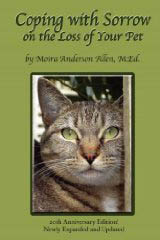 Your Guide to a Successful Writing Career
| |||

by Lawrence Schimel
The main types of phrasing to look for in your own writing or to explain in a glossary are:
Slang and ClichésThese phrases can often make a piece seem less formal and stilted in English, but they're one of the biggest translation bugaboos. ("Bugaboo" is an example of the type of colloquial "slang" I wouldn't use in an article intended for a translation market!) A translator encountering an unknown vocabulary word can look it up in a dictionary or thesaurus, but slang and clichés depend on usage that is less codified, and often these phrases mean the opposite of what they actually say. Yet all too often, these phrases will be translated literally for lack of better knowledge. Aphorisms are a type of cliché that are often universal -- for example, "the branch that does not bend with the wind will break" is easily understandable and adaptable in translation. In contrast, "He's got the feathers in his cap to prove it" is a figurative use of language that does not mean that the subject is literally walking around with a hat full of feathers -- as the phrase is liable to be translated if input from the author is not provided. While sex and desire themselves transcend language barriers, sexual slang and innuendo are some of the most difficult things to translate. My worst experience with this was with a Spanish translator who translated the term "leatherman" (describing a devotee of sadomasochism) as "pagan" because everyone was dressed in leather and practicing "strange" rituals and he didn't know the term and didn't bother to ask me what it meant!
JokesHumor based on puns and plays on words is frequently untranslatable. Sometimes, a translator who gets the joke will be able to create a parallel joke within her or his own language. But often, I've been asked to re-write text to remove a joke, or provide a footnote trying to explain an untranslatable reference or moment of humor. Sometimes you'll have to accept that it's impossible to maintain the joke, and just leave it out. "Cute Titles" are a subset of Jokes, and are a journalism mainstay. Usually, however, they are untranslatable. It may help to provide a few alternate titles, but foreign editors will usually come up with something in the tone and style of their publication, creating a language-specific pun of their own as appropriate.
Foreign WordsMany foreign words have been incorporated into common English usage that we take for granted. Since not all languages have equally adopted these words, it is best to flag them and define them; this way the translator or editor can decide whether to leave the word in its original or translate it as appropriate. An additional wrinkle when using foreign words is that many foreign languages are inflected, meaning that all nouns are assigned gender. In a story in which Yiddish slang was being translated into German, I provided a glossary of what the Yiddish terms meant; even though these words were going to appear in the German text in the original Yiddish with footnotes explaining their meanings, I still got an e-mail from the translator asking me to tell him the genders of the words, so he could use the properly gendered article in German.
Proper Nouns and NamesNames and proper nouns have no syntactic meaning in a sentence, making them meaningless for a translator or reader. Some might be recognized, but names that we take for granted as needing no introduction often do need explanation overseas. While New Yorkers are certain, for example, that everyone knows that Zabar's is an upscale food emporium, this is exactly the kind of information that needs to be clarified or explained for a foreign reader or translator. It is a good idea to make sure that casual references to proper nouns in text intended for translation markets have enough supporting context to convey their meaning, or else to add this info in a glossary.
Abbreviations, Acronyms, and DiminutivesA general rule when writing for the translation market is: spell everything out fully. Not only are many of our most common abbreviations -- like tbs. or yds. -- units of measurement that have no meaning in many parts of the world where the metric system holds sway, but these word bits can seem mysterious glyphs even to English speakers who're not already thoroughly steeped in the subject. A few extra letters can help prevent a lot of confusion. Providing a glossary does entail more work on your part, but it often merits the (minimal) extra effort. A glossary is a gesture that many foreign editors--and their translators!--greatly appreciate, and can strengthen your working relationship (and lead to future sales) by making yourself easy to deal with. And, most importantly, it prevents you from being mistranslated. After all, you want to maintain your image overseas and develop a following of readers and other editors who trust your writing.
Helpful References:
Find Out More...
This article may not be reprinted without the author's written permission. Lawrence Schimel makes his living as a full-time author and anthologist. He has published over 47 books in a wide variety of genres and media; his work has appeared in The Writer, ForeWord, The Saturday Evening Post, the Boston Phoenix, Isaac Asimov's Science Fiction Magazine, and others, including numerous international publications. His writing has been translated into Basque, Catalan, Czech, Dutch, Esperanto, Finnish, French, German, Italian, Japanese, Polish, Portuguese, Russian, Slovak, Spanish, and Swedish. |
| ||
| |||




